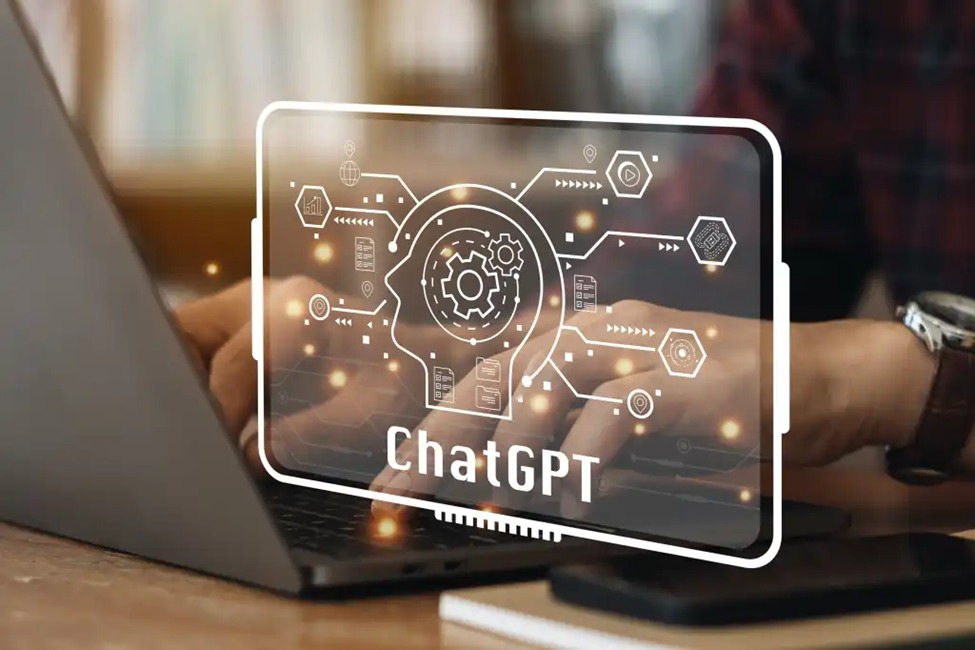In an era where artificial intelligence is revolutionizing industries, the integration of advanced language models like ChatGPT into applications has become a game-changer. From enhancing customer support to personalizing user experiences, ChatGPT integration service provides businesses with the tools to create powerful AI-driven applications.
This comprehensive guide will walk you through the process of how to make an AI app using ChatGPT, covering everything from initial planning to deployment and beyond.
What is ChatGPT?
ChatGPT, developed by OpenAI, is a state-of-the-art language model based on the Generative Pre-trained Transformer (GPT) architecture. It has been trained on a diverse dataset, enabling it to understand context, generate coherent text, and engage in conversations that resemble human dialogue.
Why Use ChatGPT for AI Applications?
Integrating ChatGPT into your AI app can enhance its functionality in several ways:
- Natural Language Understanding: ChatGPT can comprehend and respond to user inputs in a conversational manner, making interactions feel more intuitive.
- Content Generation: The model can generate high-quality text, making it ideal for applications that require content creation, such as blogs, marketing materials, and more.
- Personalization: ChatGPT can analyze user behavior and preferences to deliver tailored experiences, improving user satisfaction and engagement.
Key Considerations Before Building Your AI App
Define Your Objectives
Before diving into development, it’s crucial to outline your app’s objectives. Ask yourself the following questions:
- What specific problem does your app aim to solve?
- Who is your target audience?
- What features do you want to include, and how will they enhance user experience?
Research Your Market
Conduct thorough market research to understand the competitive landscape. Identify existing solutions and analyze their strengths and weaknesses. This will help you define your unique value proposition and differentiate your app from competitors.
Understand Legal and Ethical Implications
Integrating AI into applications raises legal and ethical considerations, especially regarding data privacy. Ensure compliance with relevant regulations, such as GDPR or CCPA, and implement transparent data usage policies.
Steps to Build Your AI App with ChatGPT Integration
Step 1: Choose the Right ChatGPT Integration Service
To begin, select a reliable ChatGPT integration service that aligns with your app’s objectives. Consider the following options:
- OpenAI API: The official API provides direct access to ChatGPT and allows you to customize interactions based on your application’s needs.
- Third-Party Platforms: Platforms like Dialogflow or Rasa may offer additional features for integrating ChatGPT into conversational applications.
Step 2: Gather Requirements and Plan Your App
Functional Requirements
List the key features and functionalities your AI app should have. Common functionalities may include:
- User authentication
- Conversational interfaces
- Content generation tools
- Data analytics dashboards
Technical Requirements
Identify the technical stack required for your app. This may include:
- Frontend Technologies: HTML, CSS, JavaScript frameworks (React, Angular, Vue.js)
- Backend Technologies: Node.js, Python, Ruby, or Java for server-side development
- Database Solutions: SQL or NoSQL databases (MySQL, MongoDB, Firebase) to store user data and application content
Step 3: Design the User Experience (UX)
Wireframing
Create wireframes to visualize your app’s layout and user flow. This will help you identify the most intuitive design for your users. Tools like Figma or Adobe XD can assist in this process.
Prototyping
Once wireframes are established, develop a prototype of your app. This can include clickable elements to demonstrate how users will navigate through the application.
Step 4: Develop Your AI App
Setting Up the Development Environment
Choose an Integrated Development Environment (IDE) that suits your preferred programming languages and frameworks. Popular options include:
- Visual Studio Code: A versatile code editor that supports multiple languages and extensions.
- PyCharm: Ideal for Python development, particularly useful if you’re utilizing AI libraries.
Implementing the Frontend
Develop the frontend of your application using your chosen framework. Ensure that the user interface is clean, responsive, and user-friendly. Incorporate design elements that align with your branding.
Implementing the Backend
Set up the backend to handle user requests, manage data, and interact with the ChatGPT API. Key tasks include:
- API Integration: Use libraries such as Axios (JavaScript) or Requests (Python) to connect with the ChatGPT API.
- Data Management: Establish database connections to store and retrieve user data as needed.
- Authentication: Implement secure user authentication mechanisms (e.g., OAuth, JWT) to protect user information.
Step 5: Integrate ChatGPT into Your App
API Key Setup
To access ChatGPT via the OpenAI API, you’ll need an API key. Sign up for an account on the OpenAI website and retrieve your key from the API dashboard.
API Calls
Implement the logic to send user inputs to the ChatGPT API and receive responses. A typical API call involves:
- Sending a prompt to the model
- Receiving a generated response
- Displaying the response to the user
Step 6: Testing Your AI App
Functional Testing
Conduct thorough testing to ensure all features work as intended. Test the app’s responsiveness, UI elements, and API interactions. Use automated testing tools like Selenium or Cypress for comprehensive coverage.
User Acceptance Testing (UAT)
Involve real users in testing the app to gather feedback. This step is crucial to identify usability issues and improve the overall user experience.
Step 7: Deploy Your AI App
Choosing a Hosting Solution
Select a hosting provider that meets your app’s requirements. Consider options like:
- Cloud Hosting: Services like AWS, Google Cloud, or Microsoft Azure provide scalable hosting solutions.
- Platform-as-a-Service (PaaS): Platforms like Heroku or Render can simplify deployment for smaller applications.
Deployment Process
- Continuous Integration/Continuous Deployment (CI/CD): Implement CI/CD pipelines to automate the deployment process. Tools like Jenkins, GitHub Actions, or CircleCI can help streamline this workflow.
- Monitoring and Logging: Set up monitoring tools (e.g., New Relic, Sentry) to track application performance and log errors for debugging.
Step 8: Gather Feedback and Iterate
After deployment, gather user feedback to identify areas for improvement. Regularly update your app based on user input, feature requests, and performance analytics. Continuous iteration is key to maintaining user engagement and satisfaction.
Best Practices for Successful AI App Development
1. Focus on User Experience
Prioritize user experience throughout the development process. Conduct user testing and gather feedback to enhance the app’s usability and design.
2. Optimize for Performance
Ensure your app runs smoothly by optimizing both frontend and backend performance. Minimize load times and enhance responsiveness to improve user satisfaction.
3. Stay Updated with AI Trends
The field of AI is rapidly evolving. Stay informed about the latest advancements in AI technologies and ChatGPT updates to keep your application competitive.
4. Prioritize Data Security
Implement robust security measures to protect user data. Encrypt sensitive information and regularly audit your security practices to safeguard against potential threats.
Challenges in AI App Development
1. Data Privacy and Compliance
Adhering to data privacy regulations is crucial when developing AI applications. Ensure your app complies with relevant laws and maintains transparency in data usage.
2. Handling User Expectations
Users may have high expectations regarding AI capabilities. Set realistic expectations for your app’s performance and clearly communicate its limitations.
3. Managing Model Bias
AI models can inadvertently learn biases from training data. Implement measures to identify and mitigate biases to promote fair and equitable use of your application.
Future Trends in AI App Development
1. Increased Personalization
The demand for personalized experiences will continue to rise. AI apps will increasingly leverage user data to deliver tailored recommendations and interactions.
2. Multimodal Interactions
Future AI applications are likely to incorporate multimodal interactions, combining text, voice, and visual inputs to enhance user engagement and accessibility.
3. AI Ethics and Regulation
As AI becomes more integrated into daily life, ethical considerations and regulations will play a crucial role in shaping the development and deployment of AI applications.
Conclusion
Integrating ChatGPT into your AI app can transform user experiences, enhance engagement, and drive business success. By following this comprehensive guide on how to make an AI app with ChatGPT integration services, you can build a powerful application that meets user needs while navigating the complexities of AI technology. Embrace the future of AI and unlock new possibilities for innovation and growth. With continuous iteration, user feedback, and a focus on quality, your AI app can thrive in a competitive landscape.




